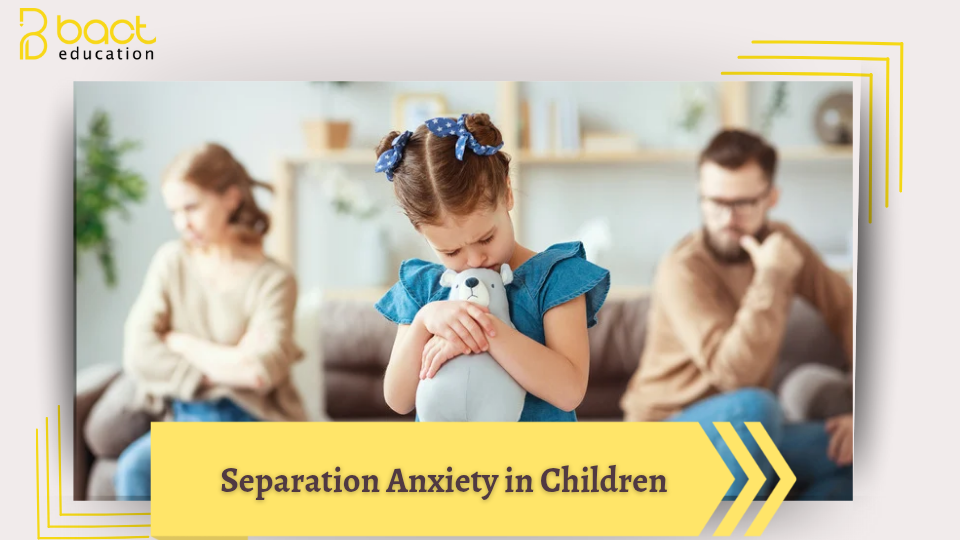Separation Anxiety in Children
Introduction:
All children and adolescents experience some level of anxiety, which is a normal part of growing up. Separation anxiety is considered normal in very young children, and nearly all children between the ages of 18 months and 3 years experience separation anxiety and tend to be somewhat clingy toward their parents. However, the symptoms of Separation Anxiety Disorder (SAD) are more severe. For it to be diagnosed as Separation Anxiety Disorder, the child must experience symptoms for at least four weeks. A child with this disorder suffers from excessive fears and worries about being separated from home or family, fears that are not appropriate for their age.
- What is Separation Anxiety Disorder in Children?
Separation Anxiety Disorder is a type of mental health problem where a child experiences intense anxiety about being separated from family members or loved ones. The child often fears getting lost or that something bad might happen to a family member if they are not together. - What Causes Separation Anxiety Disorder in Children?
Experts believe Separation Anxiety Disorder is caused by a combination of biological and environmental factors. A child may inherit a tendency toward anxiety. An imbalance in two brain chemicals, norepinephrine and serotonin, is also thought to play a role. Common causes include parental divorce, changing schools, moving to a new place, or the death of a loved one. Genetic traits can also contribute to the development of the disorder. - Which Children Are at Risk of Developing Separation Anxiety Disorder?
Separation Anxiety Disorder occurs equally in boys and girls. However, children whose parents suffer from anxiety disorders are at a higher risk of developing it. The disorder often starts in childhood but can persist into adolescence and sometimes even adulthood. - What Are the Symptoms of Separation Anxiety Disorder in Children?
The first symptoms of Separation Anxiety Disorder often appear around third or fourth grade and may start after a break from school, such as holidays or summer vacation, or following a long illness. Symptoms can vary from one child to another, but the most common ones include:
- Refusing to sleep alone.
- Frequent nightmares centered on separation.
- Intense anxiety when separated from home or family.
- Excessive worry about the safety of family members or about getting lost.
- Refusing to go to school and fear or hesitation to be left alone.
- Physical symptoms like frequent stomachaches, headaches, muscle pain, or other complaints.
It’s important to note that these symptoms can resemble other health problems, so consulting a specialist is essential for proper diagnosis.
- How Is Separation Anxiety Disorder Diagnosed in Children?
A specialized child psychiatrist or mental health expert can diagnose Separation Anxiety Disorder by evaluating the child’s mental health. Diagnosis is usually considered when anxiety or fear about being away from family members persists for at least four weeks. If the child also shows physical complaints, a healthcare provider may conduct further evaluations to rule out other medical causes. - How Is Separation Anxiety Disorder Treated in Children?
Treatment depends on the child’s symptoms, age, overall health, and the severity of the condition. Common treatment approaches include:
- Cognitive Behavioral Therapy (CBT): This therapy helps the child learn how to manage anxiety and overcome situations that trigger it.
- Medication: Antidepressants or anti-anxiety medications may help some children feel calmer.
- Family Therapy: Parents play a crucial role by monitoring the child and detecting early signs of the disorder.
- School Involvement: The child’s school may also participate by observing the child’s behavior and assisting parents in the treatment plan.
- How Can Separation Anxiety Disorder Be Prevented in Children?
Prevention involves early evaluation. If a child’s anxiety appears much more severe than that of other children at the same developmental stage, early diagnosis and treatment can reduce symptoms and prevent the condition from worsening. Early treatment not only relieves symptoms but also supports healthy development and improves the child’s quality of life.
Conclusion:
Separation Anxiety Disorder often requires professional treatment. If left untreated, it may lead to panic disorder or other anxiety disorders in adulthood. If you have concerns about your child’s separation anxiety, talk to your child’s pediatrician or another healthcare professional.

